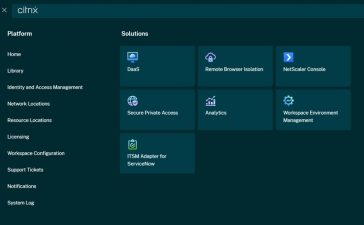Analysis India’s government has reportedly teamed with academia and startups to create its own mobile operating system dubbed IndOS, in the name of competition.
Local outlet Business Standard revealed the initiative, quoting a senior government official as saying “India is one of the largest mobile device markets in the globe. Our objective is to create a secure Indian mobile operating system that could also create choices and competition for Android’s dominance in the Indian market.”
Government sources have since gone quiet on the plan. Probably because the plan is not very detailed or serious, as India’s government surely understands two important things about the operating system market.
One is that no recent attempt at creating a new private or public OS has succeeded. Even Microsoft’s impressive Windows Phone died, despite Redmond putting literally billions of dollars behind the OS and buying Nokia to ensure a supply of handsets. Mozilla’s Firefox OS flopped. Samsung’s Tizen has been relegated to smartwatches and TV sets.
China’s attempts to grow its own desktop Linux have stalled, in part because users just kept buying Windows because it runs the software they want.
Huawei built its own HarmonyOS out of necessity. It uses plenty of code from Android and can run Android apps – because that’s what the market wants. There’s little evidence of developer enthusiasm for native HarmonyOS apps.
Which brings me to the second reason India knows its homegrown OS will have very poor prospects: developers and device manufacturers won’t care about it. They tired of OS diversity decades ago.
The people who make gizmos and write apps to run on them will not bother championing a new OS unless paid to do so. Even then both groups will ensure that minimal efforts are required to run on or accommodate the new creation.
India also has no leverage over device makers, which it is trying to lure to its shores. The promise is that an investment in local customers will lead to creation of facilities capable of also servicing offshore customers. The nation is betting that its plan will be attractive to manufacturers that learned a hard lesson in risk management when they put all their eggs in the China basket.
The government could insist those manufacturers pre-install its OS on some devices, and they’d quickly retort that plenty of other nations are happy to host new electronics factories.
After having invested plenty of political capital – and a few billion dollars – creating the beginnings of a world-class manufacturing ecosystem, India therefore cannot compel manufacturers to help it battle Big Tech’s monopolies.
It must do that itself, and it is unafraid to do so. The nation has entangled Google in multiple antitrust actions, made Facebook and Twitter tiptoe through onerous content moderation regulations, compelled clouds to pore through firewall logs looking for indications of trivial drive-by attacks, and challenged e-tail giants with a national e-commerce scheme.
But Big Tech keeps pushing back. The Asia Internet Coalition, Big Tech’s regional lobby group, recently fired off a strongly-worded letter [PDF] arguing that India’s planned Digital Personal Data Protection Bill and Competition Amendment Bill would harm the country’s stated goal of improving adoption and prevalence of digital technology. Google is fighting hard against antitrust suits, in court and the court of public opinion.
On the other hand …
Perhaps India is really working on a national OS.
It has an excellent track record creating digital public goods – especially the widely used Unified Payments Interface (UPI). The country’s enthusiasm for homegrown tech would make it popular as a concept, and possibly provoke a reaction from Big Tech.
But if India is serious, Big Tech would fight back. That could mean less money flowing to things like tech training and local cloud datacenters, or fewer photo ops for prime minister Narendra Modi alongside expat Indian tech CEOs.
It could also mean less co-operation on initiatives like pre-loading Indian government apps in Android – an initiative undertaken because India recognizes that delivery of government digital services needs Android and its extensive ecosystem.
Letting news of a local OS leak may therefore be a feint. If it is more than that, history suggests Big Tech has little to fear from IndOS, and India has plenty to lose. ®











